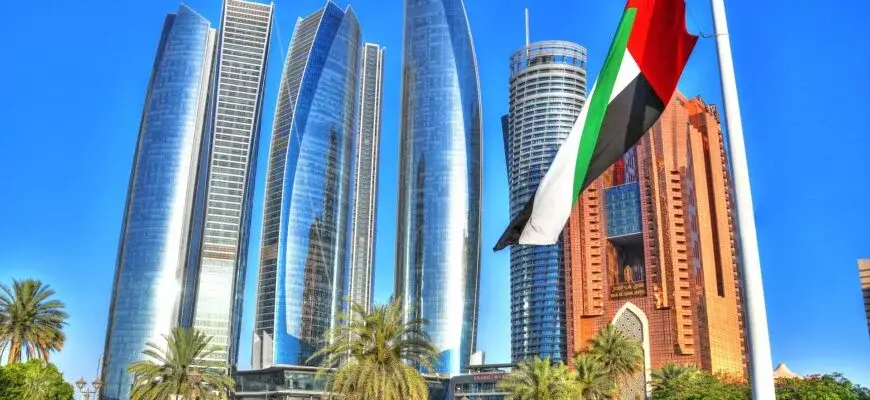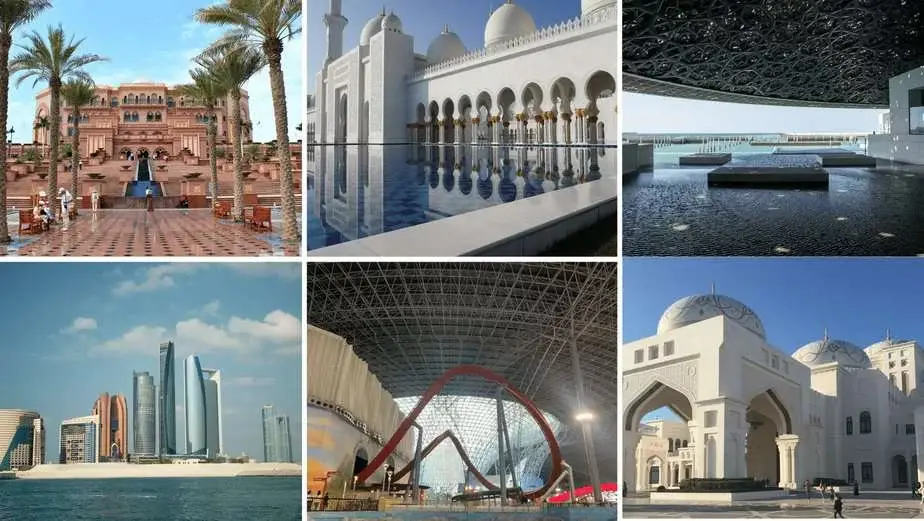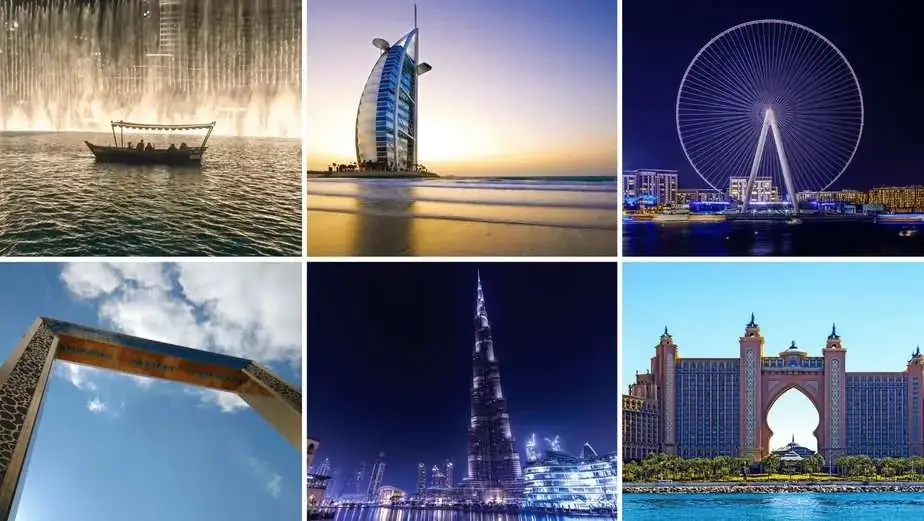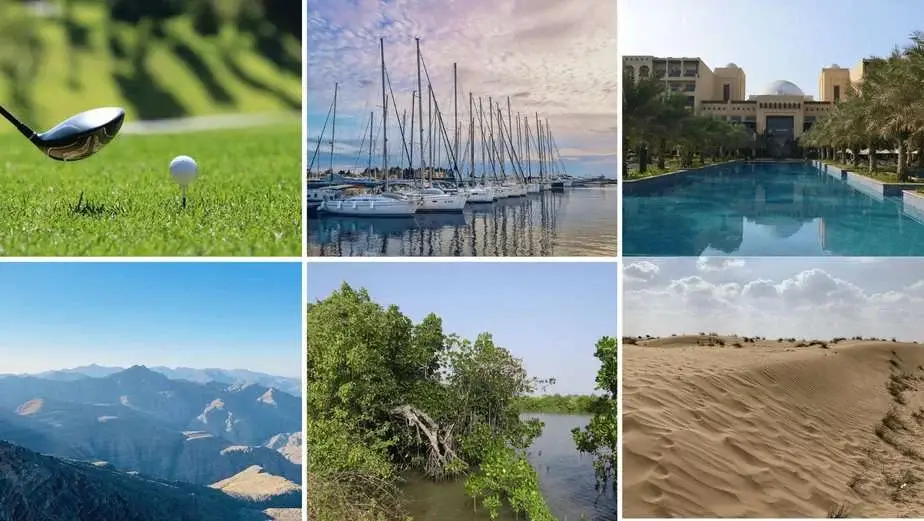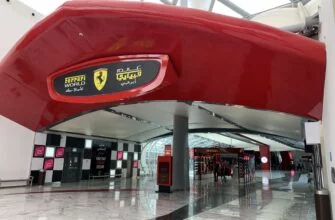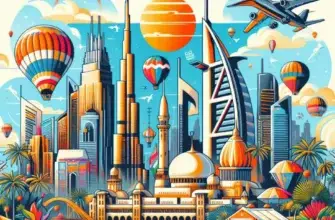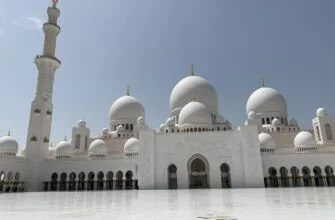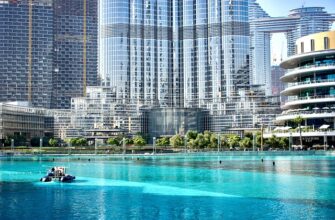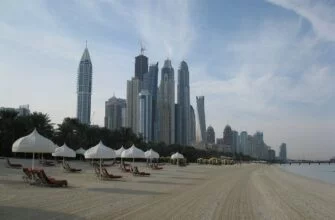The United Arab Emirates, a federation of seven emirates located on the eastern coast of the Arabian Peninsula, is renowned for its culture, world-famous destinations, and quick growth.
Each emirate has its own distinct personality, draw, and charm, yet they all share a strong bond with one another and a long history. The UAE is renowned across the world for its incredible development, especially in the fields of commerce, tourism, and investment.
Together, these 7 Emirates of UAE — Abu Dhabi, Dubai, Sharjah, Ajman, Umm Al Quwain, Ras Al Khaimah, and Fujairah — create a multifaceted and diverse country that provides both residents and tourists with a wide range of experiences.
The UAE definitely has something for everyone, from the capital city of Abu Dhabi, known for its cutting-edge architecture and oil industry, to the glittering metropolis of Dubai, which displays a remarkable combination of traditional attractions and modern ones.
Overview of the United Arab Emirates
Geography
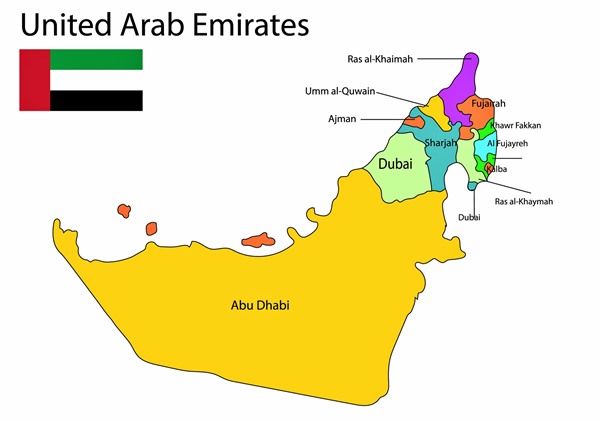
The UAE is located in the Middle East, bordering the Gulf of Oman and the Persian Gulf. The country covers an area of 83,600 square kilometers, and the seven emirates include Abu Dhabi, Dubai, Sharjah, Ajman, Umm Al Quwain, Ras Al Khaimah, and Fujairah.
Abu Dhabi is the largest emirate, covering more than three-fourths of the UAE’s total land area. Most of the terrain is sandy desert, with a few mountainous areas in the eastern parts of the country.
History
The history of the UAE dates back to ancient times. Before the formation of the UAE, the region was inhabited by various tribes and was known as the Trucial States. In the early 20th century, the British started to establish diplomatic relations with these states and signed various treaties for protection and trade.
In 1968, the British announced their withdrawal from the region, prompting the rulers of the Trucial States to come together and form a united federation. The UAE was officially established on December 2, 1971, with six emirates initially joining the federation. Ras Al Khaimah joined the UAE in February 1972 as the seventh emirate.
Government
The government of the UAE is a federal presidential elected monarchy consisting of a President, a Vice President, a Prime Minister, and a Council of Ministers. The President is the head of the federation and is elected by the Supreme Council of Rulers, which is composed of the rulers of each of the seven emirates.
The UAE’s political system is a unique combination of ancient traditions and modern practices. Despite being a monarchy, the country has made significant strides in incorporating elements of democracy, such as an advisory council with members chosen from all the emirates.
As you explore and learn more about the UAE, keep in mind the exciting blend of history, culture, and government that make this country unique in the world.
7 Emirates Of UAE
| Ruling Family | Present Ruler | Population | Square | |
| Abu Dhabi | The Nahyan | Sheikh Mohamed bin Zayed Al Nahyan | 1.567.000 | 67.340 km2 |
| Dubai | The Al Maktoum | Sheikh Mohammed bin Rashid Al Maktoum | 3.551.734 | 4.114 km2 |
| Sharjah | The Al Qasimi | Sheikh Dr. Sultan bin Muhammad Al Qasimi | 1.831.000 | 2.590 km2 |
| Ajman | The Al Nuaimi | Sheikh Humaid bin Rashid Al Nuaimi | 504.846 | 259 km2 |
| Umm Al Quwain | The Al Mualla | Sheikh Saud bin Rashid Al Mualla | 49.159 | 720 km2 |
| Ras Al Khaimah | The Al Qasimi | Sheikh Saud bin Saqr Al Qasimi | 345.000 | 1.684 km2 |
| Fujairah | The Al Sharqi | Sheikh Hamad bin Mohammad Al Sharqi | 256.256 | 1.450 km2 |
Abu Dhabi
Abu Dhabi Emirate, a land of grandeur and magnificence, stands tall as the largest emirate in the UAE, occupying a staggering 87% of the country’s total land area, which amounts to a massive 67,340 square kilometers.
Interestingly, the emirate owes its name to the Arabian oryx, a graceful species of gazelle that once roamed freely in the region.
Before the discovery of oil fields, pearl trading was the backbone of Abu Dhabi’s economy, playing a significant role in its growth and prosperity.
During the long reign of Sheikh Zayed ibn Khalifa (1855-1908), Abu Dhabi was the most powerful emirate along the Trucial Coast, but it was eventually overtaken by Sharjah and Dubai in the early 20th century.
Despite its vast expanse, Abu Dhabi has the lowest population density among all seven emirates, with only 43 people per square kilometer.
The discovery of oil fields in 1958 and their subsequent commercial production since 1962 brought about a monumental transformation in the political and economic landscape of Abu Dhabi, catapulting it to the forefront of global powerhouses.
Here are a few things that make Abu Dhabi different from other emirates:
1. Culture and Heritage: Abu Dhabi has a rich cultural heritage that is deeply rooted in Islamic traditions and values. The emirate is home to many historical sites, museums, and art galleries that showcase its rich history and culture.
2. Economy: Abu Dhabi has the vast majority of oil reserves in the UAE, which has helped it to become a major economic hub in the region. The emirate has also diversified its economy in recent years, with a focus on tourism, healthcare, and renewable energy.
3. Infrastructure: Abu Dhabi has invested heavily in its infrastructure, with world-class airports, seaports, and highways. The city is also home to iconic landmarks such as the Sheikh Zayed Grand Mosque, Emirates Palace Hotel, and the Louvre Abu Dhabi.
4. Education: Abu Dhabi is home to some of the top universities and schools in the region, including New York University Abu Dhabi, Khalifa University, and the Abu Dhabi International School.
5. Environment: Abu Dhabi has made significant efforts to protect its natural environment, with initiatives such as the Abu Dhabi Sustainable City and Masdar City, a carbon-neutral city that is powered entirely by renewable energy. Overall, Abu Dhabi’s unique blend of culture, economy, infrastructure, education, and environment makes it stand out from the other emirates in the UAE.
Main Landmarks:
- Sheikh Zayed Grand Mosque
- Louvre Abu Dhabi
- Qasr Al Watan – The Presidential Palace
- Emirates Palace
- Ferrari World
- Mangroves
- Saadiyat Island
- Yas Island
- Corniche
Dubai
Dubai, the jewel of the United Arab Emirates, is a land of towering skyscrapers and opulent living. Prepare to be awestruck by the Burj Khalifa, the tallest building in the world, and the sprawling Dubai Mall. A bustling hub for international trade and tourism, Dubai boasts endless options for shopping, dining, and entertainment.
Dubai stands out from the other emirates in a myriad of ways:
- It’s known as the second largest Emirate and boasts the highest population (more than 2 millions people) and is the proud home of the world-renowned city of Dubai, a hub for global trade, tourism, and luxury.
- Dubai is a fascinating blend of modernity and tradition, where towering skyscrapers and lavish lifestyles coexist in harmony with the region’s rich cultural heritage.
- Dubai is known for its ambitious and awe-inspiring projects, such as the Palm Jumeirah and the Burj Khalifa, which have earned it a reputation as a city of innovation and progress.
- Dubai’s focus on tourism is unparalleled, with a plethora of attractions, shopping options, and entertainment opportunities that cater to visitors from every corner of the world.
Overall, Dubai is a destination that caters to a diverse range of travelers.
Whether you’re a luxury traveler seeking opulent accommodations and high-end experiences, a business traveler attending conferences and meetings, or an adventure seeker looking for outdoor activities like desert safaris and water sports, Dubai has something for everyone.
Culture enthusiasts will appreciate the city’s rich heritage, with museums, art galleries, and historical landmarks that offer insights into the region’s history and traditions.
Family vacationers will find plenty of fun activities, such as theme and water parks, while shopaholics will be in heaven with the countless malls, souks, and boutiques offering everything from designer fashion to traditional handicrafts.
Main Landmarks:
- Burj Khalifa
- The Burj Al Arab
- The Dubai Fountain
- The Palm Jumeirah
- Dubai Marina
- The Museum Of The Future
- Dubai Frame
- Global Village
- Dubai Opera
- La Mer
- Dubai Creek
- Jumeirah Mosque
- Al Seef
- AL Qudra Lakes
- Madinat Jumeirah
- Hatta
Sharjah
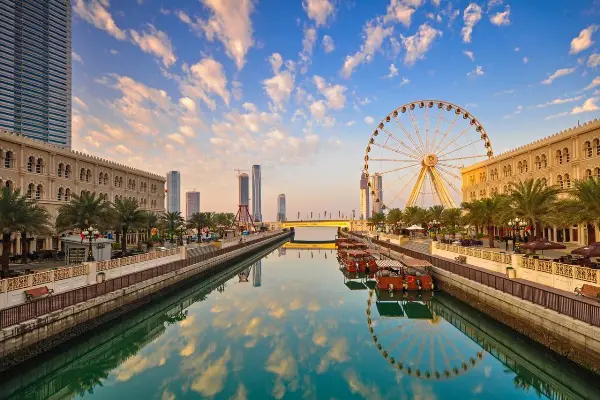
Nestled on the eastern coast of the Arabian Peninsula, Sharjah is a sprawling emirate that borders Dubai to the south and Ajman to the north.
Covering approximately 259 square kilometers, it is the third-largest emirate in terms of land area. With a population of around 1.8 million people, Sharjah is a melting pot of cultures and traditions, with Islam as the official state religion.
The emirate is renowned for its rich cultural heritage, boasting numerous museums, art galleries, and historical landmarks, such as the Sharjah Museum of Islamic Civilization and the Sharjah Heritage Area.
Sharjah also has a strong emphasis on education, with several universities and colleges, including the prestigious American University of Sharjah and the University of Sharjah.
As a popular tourist destination, Sharjah offers a plethora of attractions, including the Al Noor Island, Sharjah Aquarium, and Al Majaz Waterfront. The emirate’s thriving economy is centered around industry, trade, and tourism.
However, Sharjah is also known for its strict laws and regulations, including a ban on alcohol and a dress code for women, which reflect its conservative values and traditions.
Thus, Sharjah is a cultural hub and a must-visit destination for tourists who are passionate about art, history, and culture.
As the cultural capital of the UAE, Sharjah is home to numerous museums and galleries that showcase the region’s rich cultural heritage. Whether you’re interested in Islamic culture, contemporary art, or history, you’ll find something to pique your interest in Sharjah.
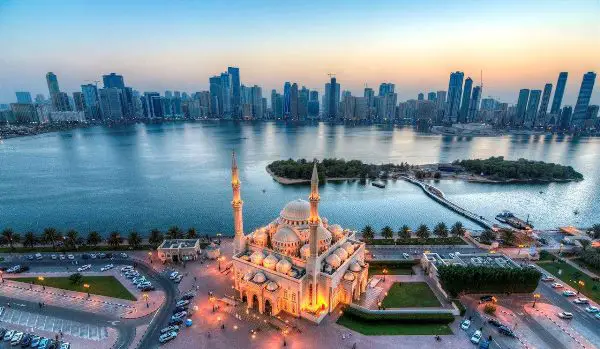
Main Landmarks:
- Al Qasba
- Mleiha Archaeological Site
- The Blue Souk
- Sharjah Fort Al Hisn
- Islamic Civilization Museum
- Sharjah Art Museum
- Al Noor Island
- Al Noor Mosque
- Sharjah Cultural Square
- Khor Fakkan
- Al Montazah Parks
- Arabian Wildlife Center
- Sharjah Aquarium
- Sharjah Classic Car Museum
- Maritime Museum
- Sharjah Science Museum
Ajman
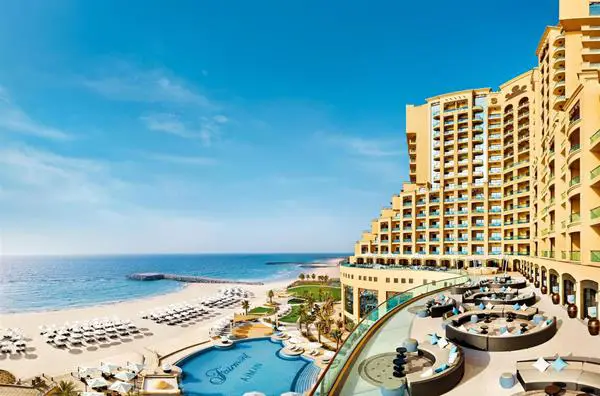
Nestled on the coast of the Arabian Gulf, Ajman is a charming emirate that offers a unique and intimate experience for tourists. Despite being the smallest of the seven emirates in terms of total area, Ajman is big on natural beauty, boasting some of the region’s most beautiful and peaceful beaches, such as Ajman Beach and Al Zorah Beach known for their crystal-clear waters and golden sands.
The emirate’s rich cultural heritage is evident in the Ajman Museum, which is housed in an 18th-century fort and showcases the region’s history and culture.
For those looking for an authentic shopping experience, Ajman’s traditional souks, such as the Ajman Souk and Al Jarf Souk, offer a glimpse into the emirate’s vibrant culture and local handicrafts, textiles, and spices.
Ajman is also a great destination for budget travelers, with affordable hotels and dining options compared to the more expensive Dubai and Abu Dhabi.
The Ajman Free Zone is a thriving business hub that offers tax exemptions and other incentives for foreign investors and businesses, making it an attractive destination for entrepreneurs and investors.
With a more relaxed and laid-back atmosphere compared to the hustle and bustle of Dubai and Abu Dhabi, Ajman is the great place for tourists who expect unwind, relax and experience the UAE’s natural beauty and rich cultural heritage.
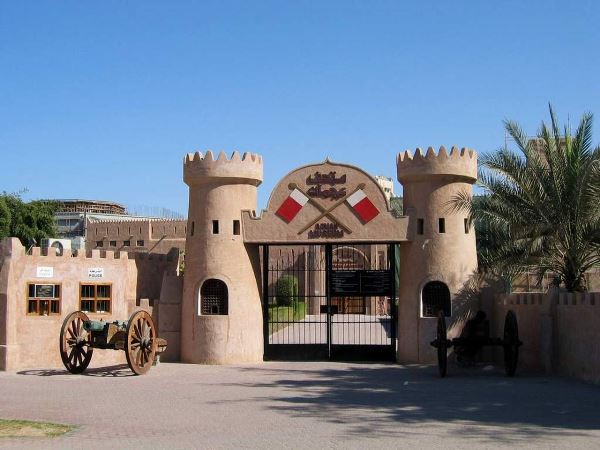
Main Landmarks:
- Etisalat Tower
- Ajman Dhow Yard
- Ajman Corniche
- Ajman Marina
- Ajman City Centre
- Sheikh Zayed Mosque
- Ajman National Museum
- Seneyah Island
- Masfout
- Al Zorah Natural Reserve
- Al Dur Archaeological Site
- Al Murabba Watchtower
Umm Al Quwain
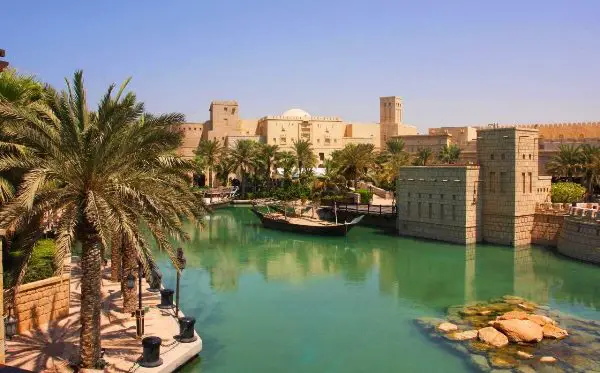
Umm Al Quwain’s history is steeped in ancient Mesopotamia and its ties to the Umm Al Nar civilizations, providing a window into the region’s rich cultural heritage. In the 18th century, the Al Ali tribe ruled the emirate, which played a significant role in the pearling industry, a major source of income for the region.
The name of the emirate itself is shrouded in mystery, with two theories surrounding its origin. The name “Umm Al Quwain” is said to signify “the mother of two powers,” alluding to the emirate’s two historic economic and agricultural capabilities: the sea and the land. Another hypothesis suggests that the name is derived from the word “Qawn”, which alludes to iron. Unaffected by the origin of its name, Umm Al Quwain has a long and intriguing past that has influenced its culture and identity.
Umm Al Quwain is a hidden gem that boasts some of the UAE’s most pristine natural beauty, with its mangroves and beaches being the emirate’s main attractions.
While exploring the area, visitors might stumble upon the UAQ Marine Club, which is a popular spot for watersports and family activities, offering a range of exciting activities such as canoeing, wakeboarding kayaking. For those looking for a more peaceful experience, a visit to the serene Al Sinniyah Island is a must, where you can enjoy birdwatching and stunning views of the emirate’s natural beauty.
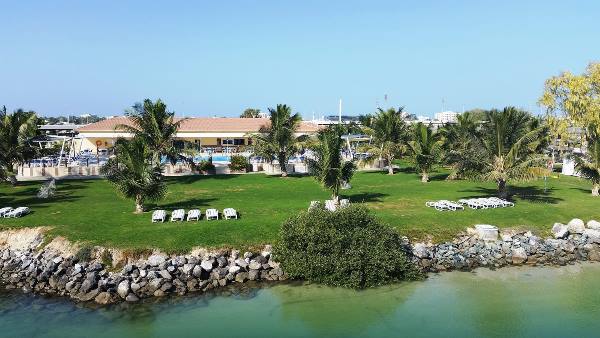
Main Landmarks:
- Dreamland Water Park
- Umm Al Quwain Fort
- UAQ National Museum
- Mangrove Beach
- Abandoned Russian Aircraft
Ras Al Khaimah
Located in the United Arab Emirates (UAE), Ras Al Khaimah is a distinctive and diversified emirate. The emirate is one of the oldest continuously inhabited areas in the world, with a rich history that extends back to 7,000 years ago and archaeological evidence of human occupancy in the region.
With a robust pearl business and commercial ties to East Africa and India, the emirate served as a significant trading centre in the area. The Arabic name “Ras Al Khaimah” refers to the hilly topography that dominates the emirate’s geography and means “top of the tent” in English.
It is currently renowned for its stunning natural surroundings, which include a varied environment of mountains, deserts, and beaches. This makes it an excellent location for outdoor activities like hiking and camping.
At Jebel Jais, visitors may experience the longest zip line in the world or see the majestic Dhayah Fort. Relax on the stunning Al Hamra Beach sands to unwind.
Ras Al Khaimah Free Trade Zone and Ras Al Khaimah Economic Zone (RAKEZ), two of the major economic zones in the United Arab Emirates that provide a variety of commercial and investment possibilities, are also located in the emirate.
Ras Al Khaimah also has a variety of cultural attractions, such as the Dhayah Fort, which was built in the eighteenth century, and the National Museum of Ras Al Khaimah, which exhibits the history and culture of the emirate. Ras Al Khaimah is a unique and appealing location within the United Arab Emirates because of its diversified picturesque landscapes, which offer a rich adventure-driven experience.
Main Landmarks:
- Jebel Jais Mountains
- Shimal
- Jazirat Al Hamra
- Wadi Shawka
- Ras Al Khaimah Fine Arts Festival
- Dhayah Fort
- Al Qawasim Corniche
- National Museum of Ras Al Khaimah
- Saqr Park
- Al Marjan island
- Al Hamra Marina &Yacht Club
- RAK Mangrove System
- Suwaidi Pearl Farm
- Natures Treasure Museum
- RAK Zoo
- Golf Courses
Fujairah
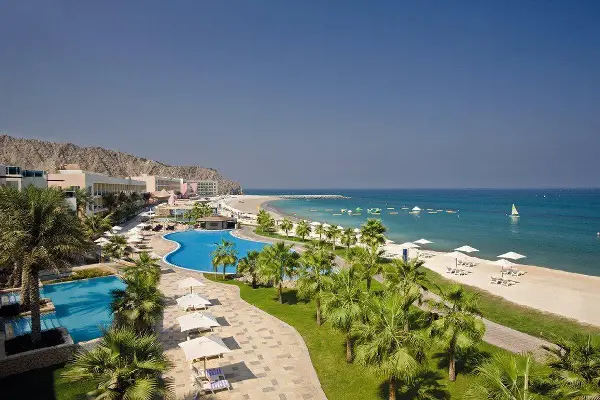
On the United Arab Emirates’ (UAE) eastern coast sits the gorgeous and unique emirate of Fujairah.
To learn more about the Fujairah Emirate, consider the following details:
- Fujairah is the only emirate that lies wholly on the eastern side of the country, which is in contrast to other emirates that are positioned around the Arabian Gulf.
- The Hajar Mountains, which are found in the emirate, form an impressive background to the area’s breathtaking natural beauty.
- Over 90 kilometers of Fujairah’s coastline are made up of several beaches and coves, including the famous Snoopy Island, with great options for scuba diving, swimming, and sunbathing.
- The emirate is known for its Arab world rich history, with archaeological sites dating back to the Bronze Age and a number of historic forts and watchtowers that have been preserved and restored. During your visit, you can visit the Al Bidya Mosque, the oldest in the country.
- Fujairah has a vast variety of regional and international cuisine, making it a genuine foodie’s paradise. Because of the emirate’s coastal location, fresh seafood is a mainstay on many menus. A variety of fish, prawns, and crabs are harvested every day and served up in a variety of delectable ways.
For travelers looking for a genuine and unforgettable experience, it’s is a fascinating and distinctive location that provides a blend of outdoor activities, cultural attractions, and natural beauty.
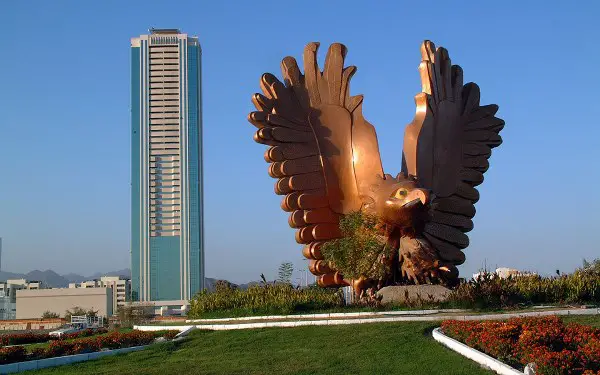
Main Landmarks:
- Al Aqah
- Fujairah Fort
- Al-Bidyah Mosque
- Bithnah Fort
- Al-Hayl Castle
- Wahlah Fort
- Dibba
- Fujairah Heritage Village
- Snoopy Island
- Umbrella Beach
- Sheikh Zayed Grand Mosque
Frequently Asked Questions
What are the 7 emirates of the UAE?
The 7 emirates of the UAE are Abu Dhabi, Dubai, Sharjah, Ajman, Umm Al Quwain, Ras Al Khaimah, and Fujairah. Each emirate has its own traditions and unique cultures, making the UAE a diverse and fascinating country.
Who is the king of 7 emirates?
There isn't a single king for the entire UAE. Each emirate has its own ruler, and together they form the Supreme Council of Rulers. However, the President of the UAE, Sheikh Khalifa bin Zayed Al Nahyan, who is also the ruler of Abu Dhabi, holds a prominent role within the country.
Is Al Ain part of 7 Emirates?
Yes, Al Ain is part of the emirate of Abu Dhabi. It is located near the border with Oman and is known for its natural springs, greenery, and historical sites.
Which emirate is the richest?
Abu Dhabi is the richest emirate in the UAE, possessing around 90% of the country's oil reserves. Its wealth has led to significant investments in infrastructure, tourism, and cultural projects.
When did the UAE become united as one country?
The UAE became united as one country on December 2, 1971. At that time, six emirates (Abu Dhabi, Dubai, Sharjah, Ajman, Umm Al Quwain, and Fujairah) joined together, with Ras Al Khaimah joining later in February 1972.
Where is the capital of the UAE?
The capital of the UAE is Abu Dhabi, which is also the largest of the seven emirates. It is a vibrant city with modern architecture, cultural institutions, and many attractions for visitors to explore.
Which Emirate has the largest population in the UAE?
Dubai has the largest population among the seven emirates. Known for its luxury shopping, ultramodern architecture, and lively nightlife scene, Dubai attracts millions of tourists each year and has become a global city.
Where is all the oil from in the UAE?
Most of the UAE's oil reserves are found in Abu Dhabi, which accounts for around 90% of the country's total oil production. The UAE is one of the largest oil producers in the world, and this natural resource plays an important role in the nation's economy.
As a whole, the seven emirates of the United Arab Emirates provide tourists with a distinctive and varied range of experiences. Each emirate has its own distinct personality and attractions, from the busy city of Dubai to the serene mountains of Ras Al Khaimah. The United Arab Emirates has something to offer everyone, whether they are looking for excitement, leisure, or cultural immersion.
While the rich history of Arab world and cultural legacy are still appreciated and protected, its quick development and modernity have made it a major tourist destination for visitors from all over the world. The UAE is a fascinating and vibrant location that will no doubt hold travelers’ attention for years to come even as it grows and changes.
About The Author
I am Anastasia, the author of this blog and a passionate and experienced traveler who resides in the UAE.
I have visited every Emirate, every popular sight, and every hidden gem.
I m here to help you make your trip to the UAE unforgettable.

